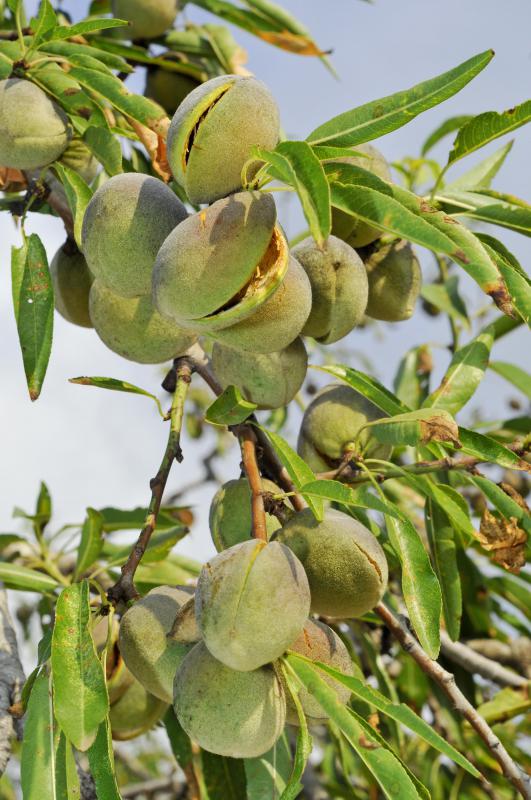At WiseGEEK, we're committed to delivering accurate, trustworthy information. Our expert-authored content is rigorously fact-checked and sourced from credible authorities. Discover how we uphold the highest standards in providing you with reliable knowledge.
How Do I Choose the Best Almond Bush?
There are a few things to keep in mind when choosing the best almond bush. Begin by considering the color and size you would like, and then seek out healthy plants that fit that description. Examining all parts of the plant for good health is important because an unhealthy bush could die or spread disease or parasites to other plants in the garden.
One thing to consider when choosing the best almond bush is the color of the flowers. They come in shades of white or pink, often with a deeper color in the center of the flowers. When considering what color bush to get, take the color scheme of the garden into account so that the almond bush fit into the existing environment.

Another thing to keep in mind when choosing an almond bush is the size of the plant when fully grown. Most of these plants grow to a height of about 7 feet (2.1 meters), though there are some varieties that can grow to 20 feet (6.1 meters). Taller varieties can be used as flowering trees while small bushes may be potted or used as hedges.
Once you know what color and size of almond bush to get, the next step in choosing the best plant is selecting one that is healthy. When choosing a plant, examined all of its parts to make sure that it is carrying no parasites or disease. Choose a plant that is a manageable size and uniform in shape.

After selecting a generally healthy looking almond bush, choosing the best one available requires looking carefully at the parts of the plant. The leaves should be uniform in shape, size, and color and should appear vibrant and bright green. The branches of the almond bush should be firm but pliable, a quality that can be tested by bending them a bit to make sure that they spring back into place. The flowers of the almond bush should also be considered. In general, it's a good idea to choose a plant that has not bloomed yet and that is covered in buds.
The roots of the bush should also be examined to make sure they are not rotting. A plant with unhealthy roots may not survive transplant. If any pests are found on the leaves, flowers, branches or in the soil, a different bush should be selected.
AS FEATURED ON:
AS FEATURED ON:












Discuss this Article
Post your comments